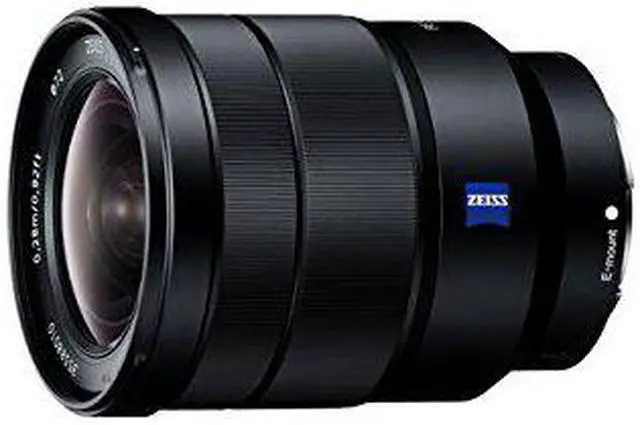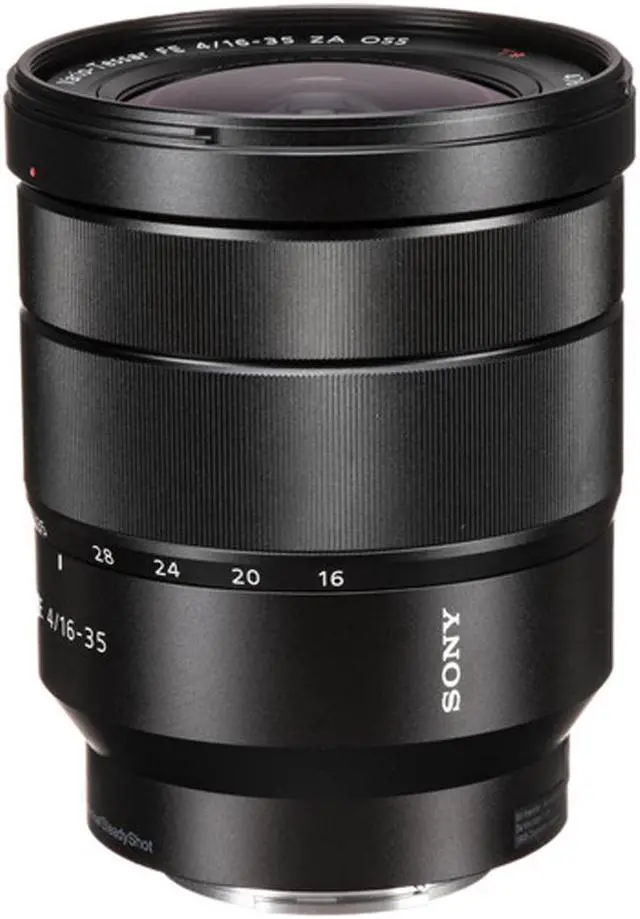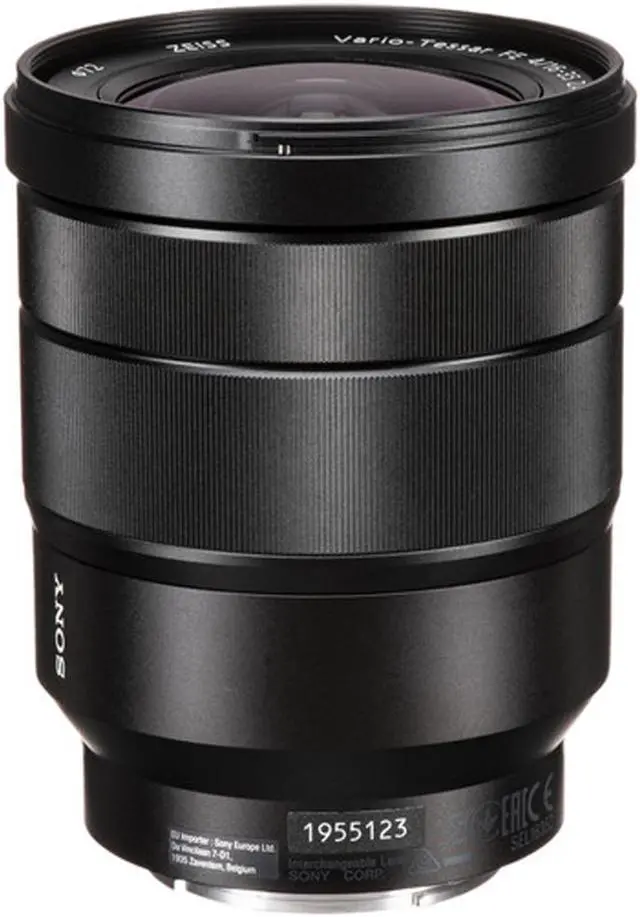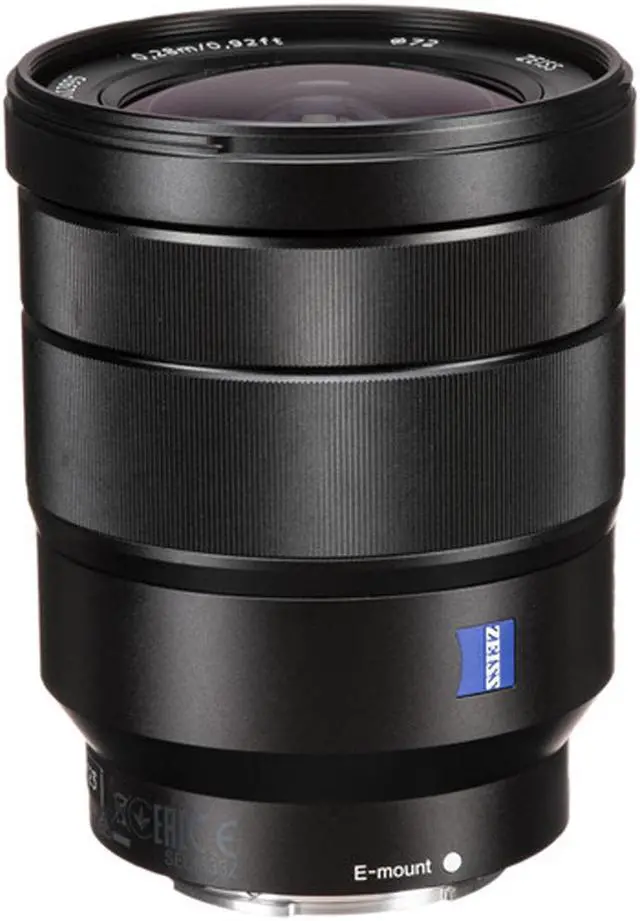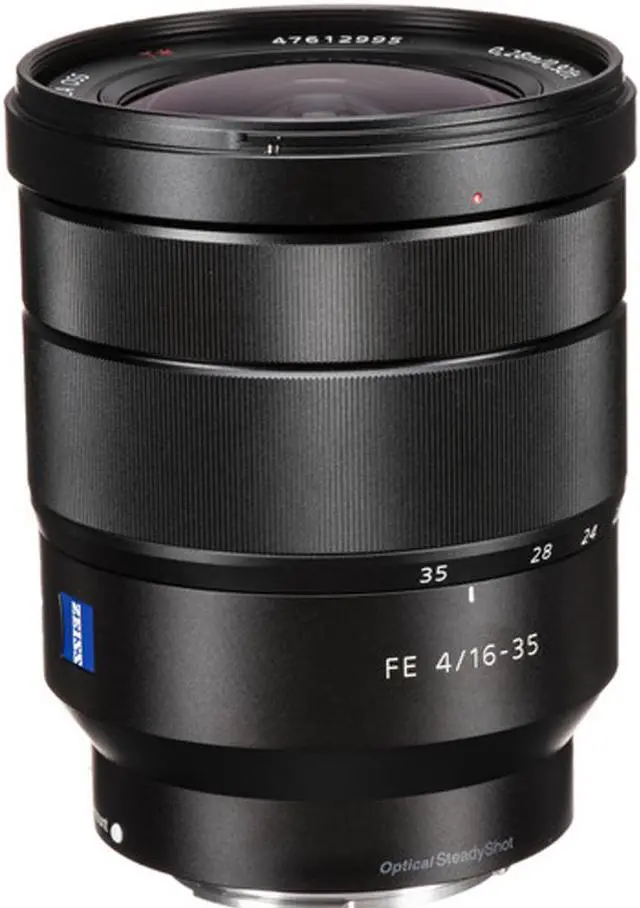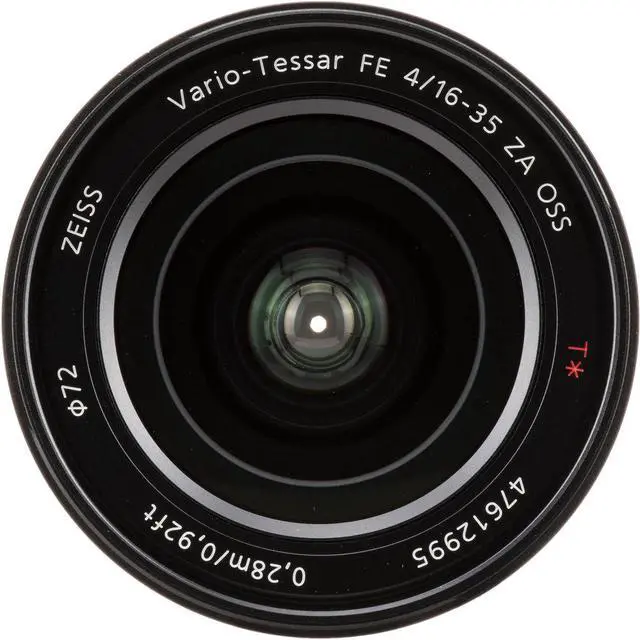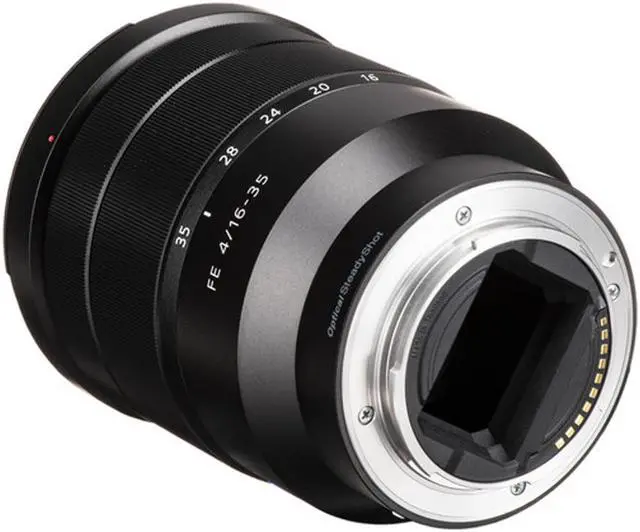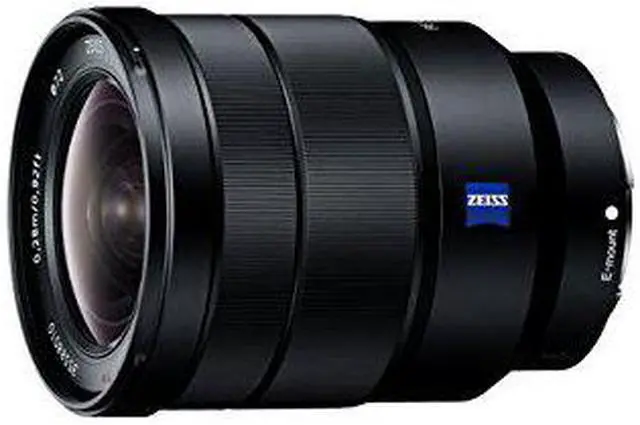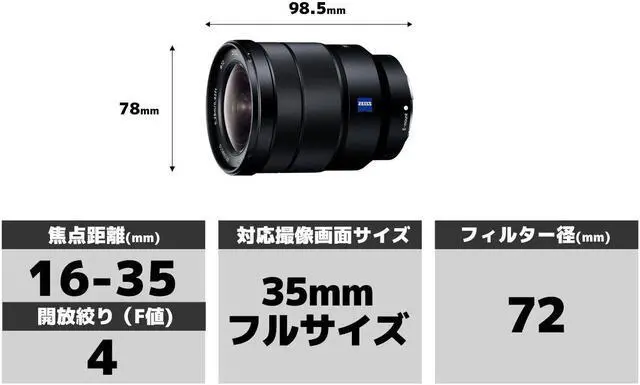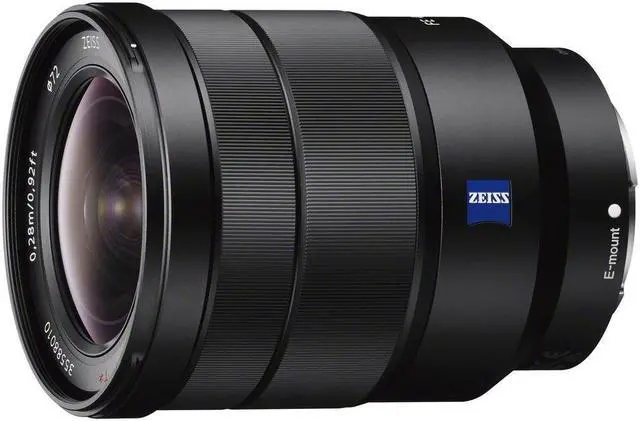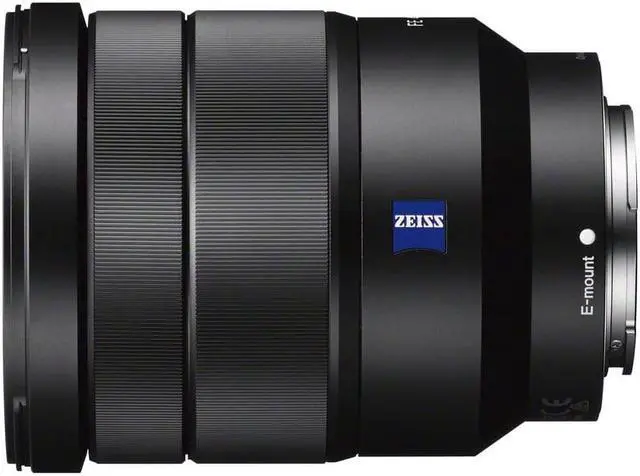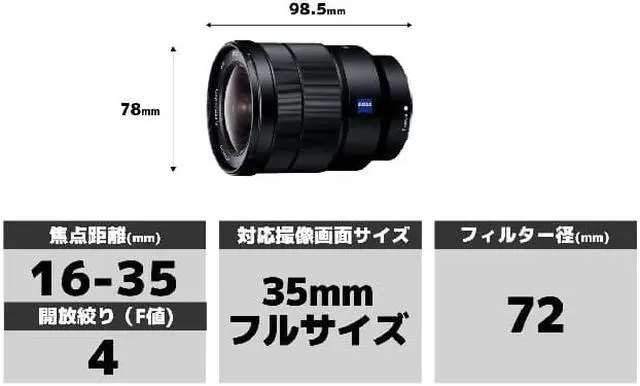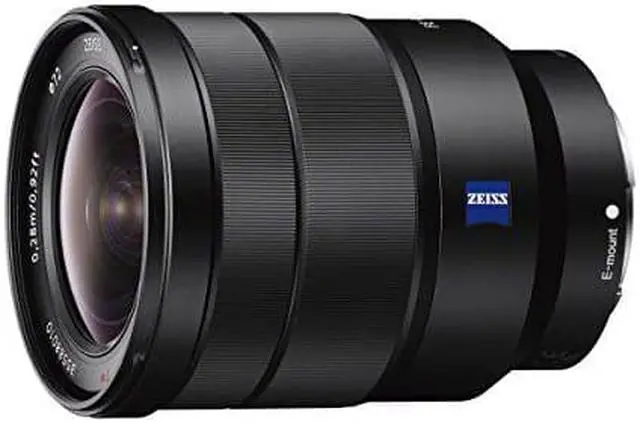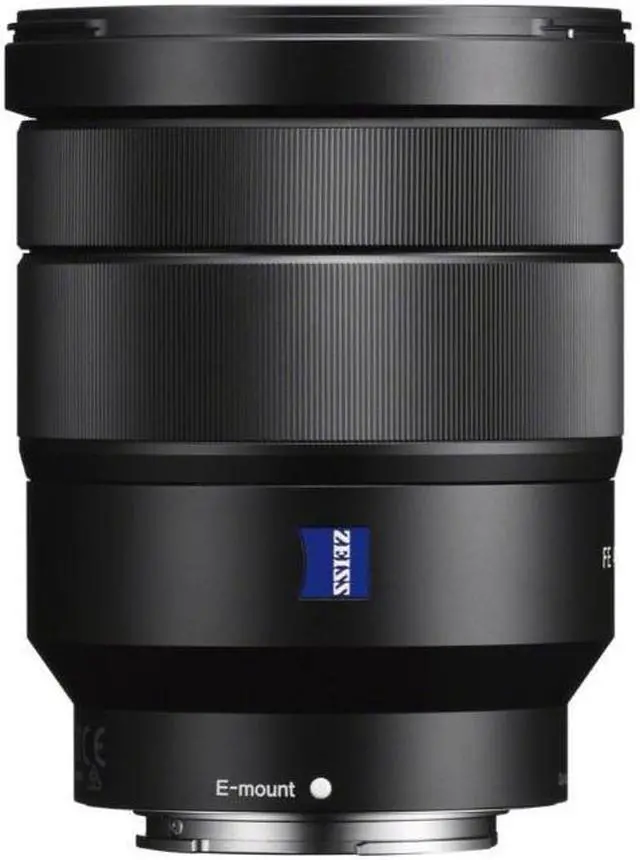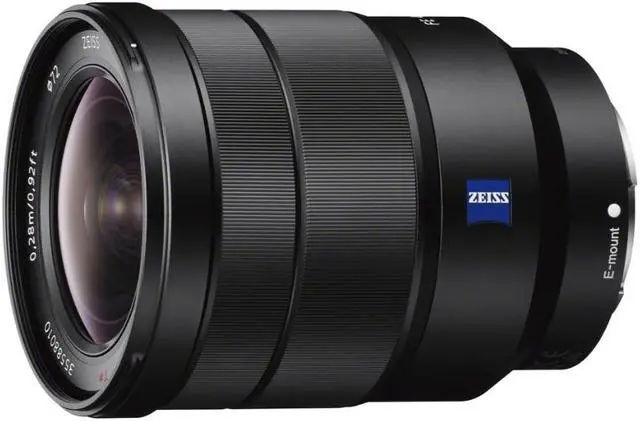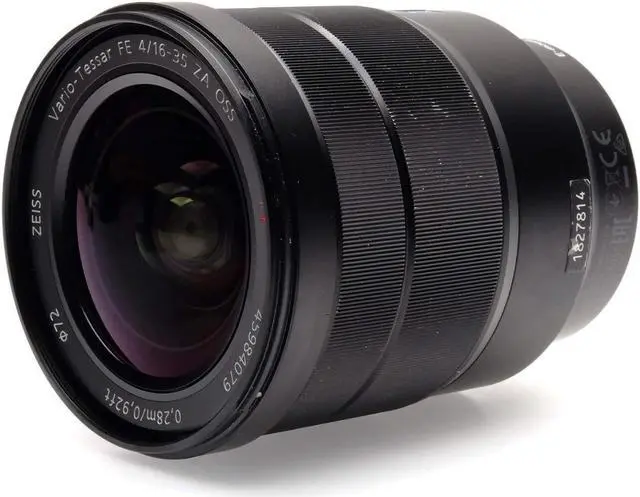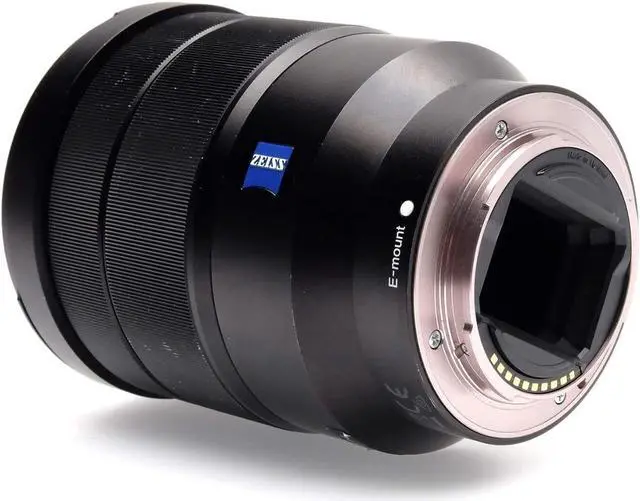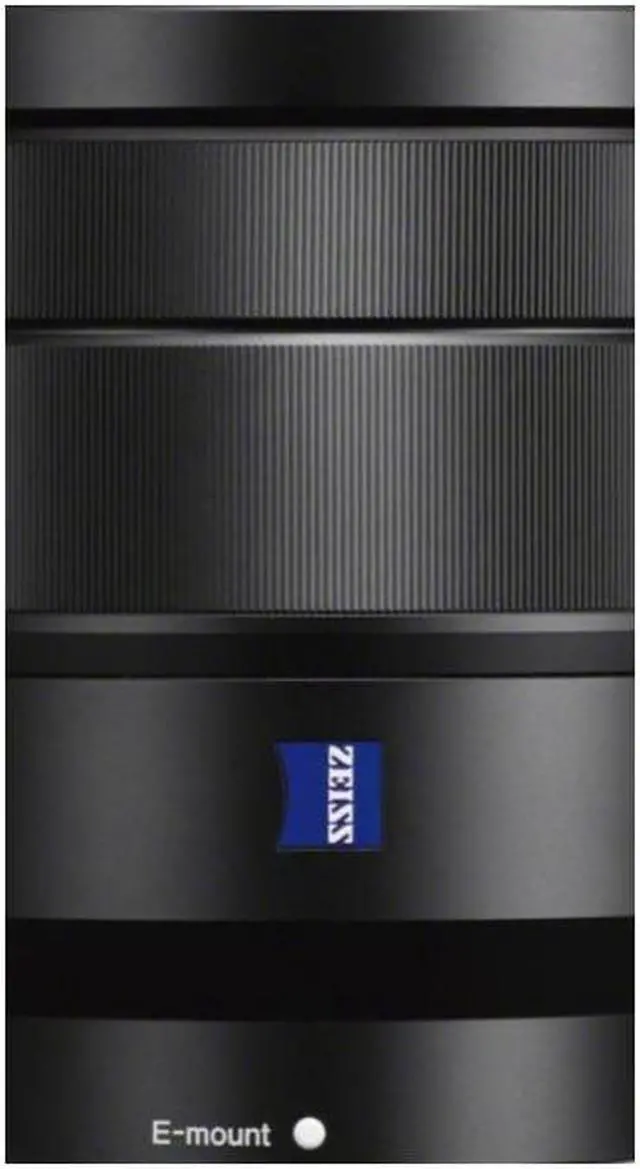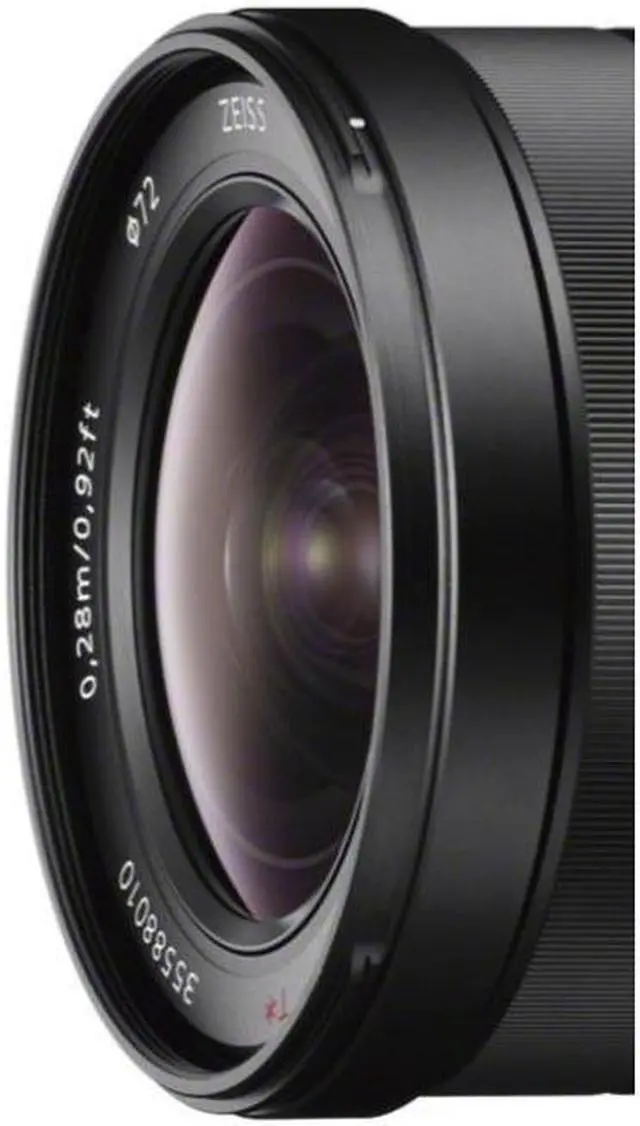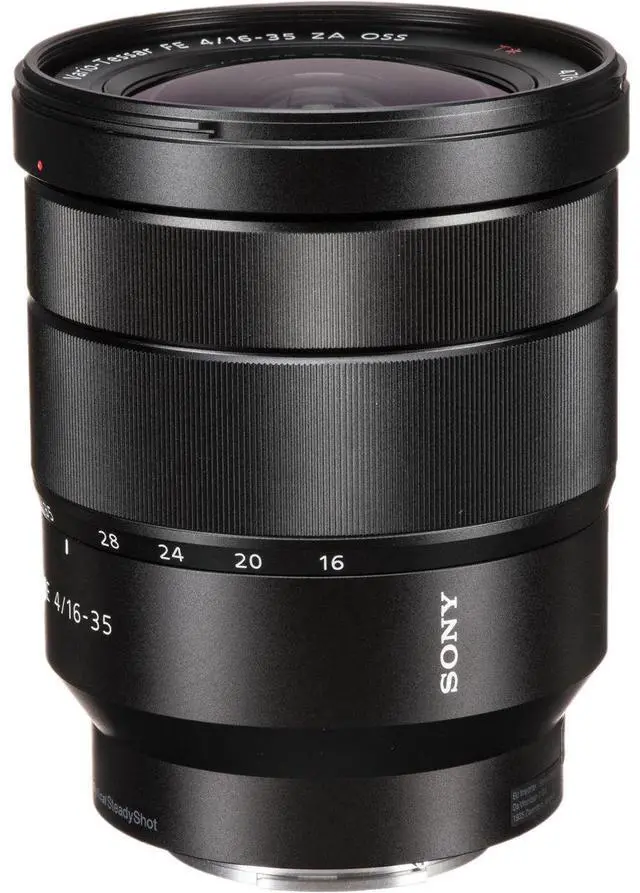In The Box: Sony 16-35mm Full-frame E-mount Wide-angle Zoom LensALC-F72S 72mm Front Lens CapR1EM Rear Lens Cap for Select Alpha NEX E-Mount Lenses (Black) ALC-SH134 Lens HoodLens Carrying CaseSony 1
Year Limited WarrantyFeatures: The Sony 16-35mm Full-frame E-mount Wide-angle Zoom Lens features the ZEISS T* (T-Star) coating that virtually eliminates lens flare, internal reflection and light scattering that can otherwise occur at glass-to-air surfaces. The T* coating contributes to outstanding image quality, with high contrast and uniformly excellent resolution right out to the image edges. Not simply applied to any lens-the T* symbol only appears on multi-element lenses in which the required performance has been achieved throughout the entire optical path, therefore promising the highest quality. Circular Aperture When changing your aperture to defocus the background, the light sources appear blurred. This ' bokeh' effect of the blurred background can be enhanced with circular aperture blades used in this lens. Conventional aperture blades have flat sides creating unappealing polygonal shaped defocussed points of light. Circular aperture overcomes this problem through the use of curved blades that keeps the aperture almost perfectly circular from its wide-open setting to when it is closed.. Smoother, more natural defocusing can be obtained as a result. Aspherical lens elements Aspherical lens design dramatically reduces spherical aberration while also reducing lens size and weight.
Spherical aberration is a slight misalignment of the light rays projected on the image plane, caused by differences in refraction in conventional spherical lenses which degrade image quality in large-aperture lenses. Specially shaped "aspherical" elements near the diaphragm restore alignment of light rays at the image plane, maintaining high sharpness and contrast even at maximum aperture and can also be used at other points in the optical path to reduce distortion. Well-designed aspherical elements often requires complex glass molding technology, but can reduce the total number of elements required, thus reducing overall size and weight. ED (Extra-low Dispersion) glass As focal lengths get longer, lenses built with conventional optical glass have difficulties with chromatic aberration and as a result images suffer from lower contrast, lower color quality and lower resolution. ED glass dramatically reduces chromatic aberration and provides superior contrast across the entire image, even at large aperture settings
